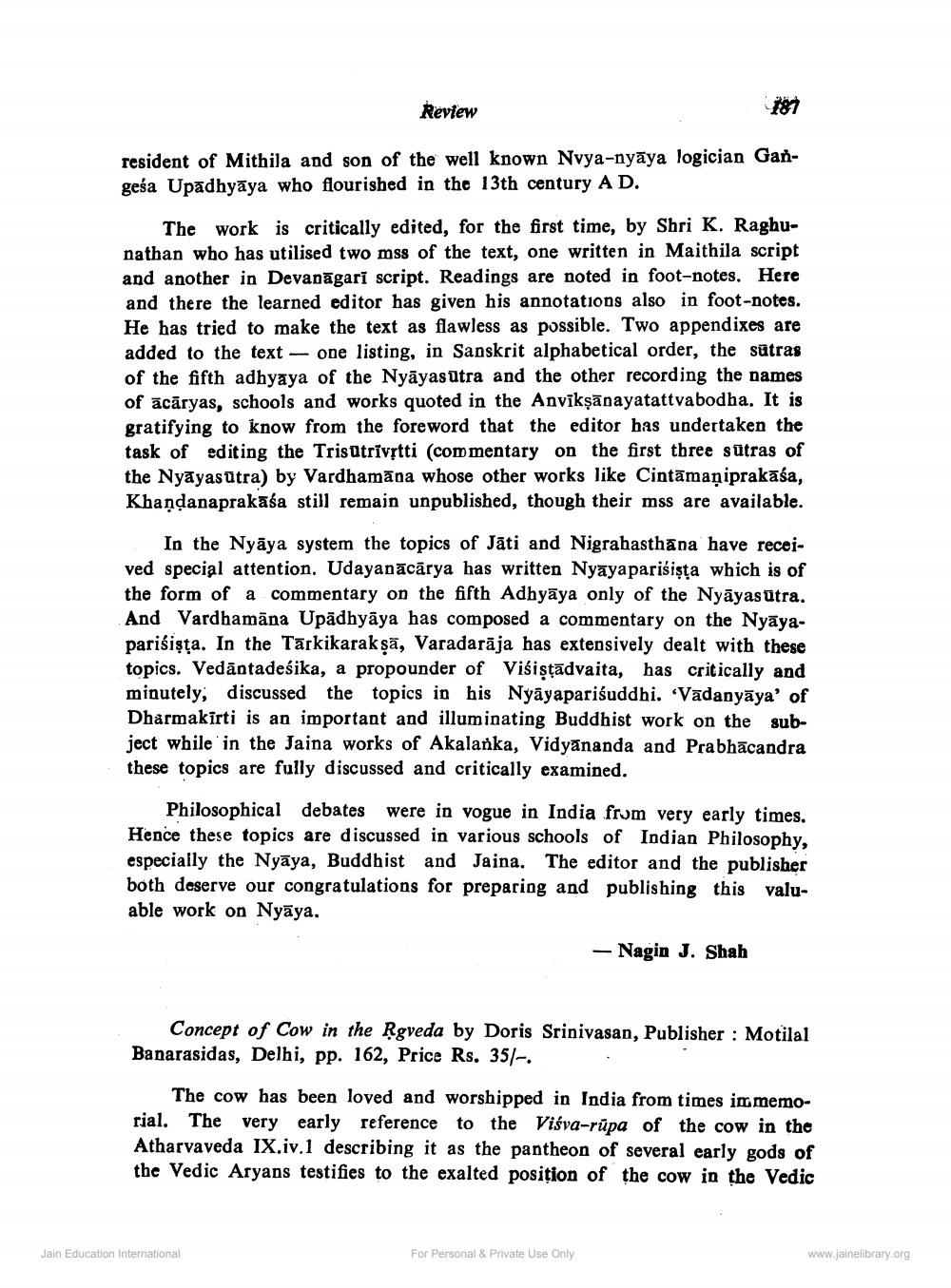________________
Review
187
resident of Mithila and son of the well known Nvya-nyāya logician Gangeśa Upadhyāya who flourished in the 13th century AD.
The work is critically edited, for the first time, by Shri K. Raghunathan who has utilised two mss of the text, one written in Maithila script and another in Devanāgarī script. Readings are noted in foot-notes. Here and there the learned editor has given his annotations also in foot-notes. He has tried to make the text as flawless as possible. Two appendixes are added to the text -- one listing, in Sanskrit alphabetical order, the sūtras of the fifth adhyaya of the Nyāyasutra and the other recording the names of ācāryas, schools and works quoted in the Anvīkņānayatattvabodha. It is gratifying to know from the foreword that the editor has undertaken the task of editing the Trisatrīvptti (commentary on the first three sutras of the Nyāyasūtra) by Vardhamāna whose other works like Cintāmaņiprakāśa, Khandanaprakaśa still remain unpublished, though their mss are available.
In the Nyāya system the topics of Jāti and Nigrahasthāna have received special attention. Udayanācārya has written Nyayaparisista which is of the form of a commentary on the fifth Adhyāya only of the Nyāyasūtra. And Vardhamāna Upādhyāya has composed a commentary on the Nyāyaparisista. In the Tarkikarak şā, Varadarāja has extensively dealt with these topics. Vedāntadeśika, a propounder of Viśiştādvaita, has critically and minutely, discussed the topics in his Nyāyaparisuddhi. "Vadanyāya' of Dharmakirti is an important and illuminating Buddhist work on the subject while in the Jaina works of Akalanka, Vidyānanda and Prabhācandra these topics are fully discussed and critically examined.
Philosophical debates were in vogue in India from very early times. Hence these topics are discussed in various schools of Indian Philosophy, especially the Nyāya, Buddhist and Jaina. The editor and the publisher both deserve our congratulations for preparing and publishing this valuable work on Nyāya.
- Nagin J. Shah
Concept of Cow in the Rgveda by Doris Srinivasan, Publisher : Motilal Banarasidas, Delhi, pp. 162, Price Rs. 35/-.
The cow has been loved and worshipped in India from times in memorial. The very early reference to the Viśva-rüpa of the cow in the Atharvaveda IX.iv.1 describing it as the pantheon of several early gods of the Vedic Aryans testifies to the exalted position of the cow in the Vedic
Jain Education International
For Personal & Private Use Only
www.jainelibrary.org




